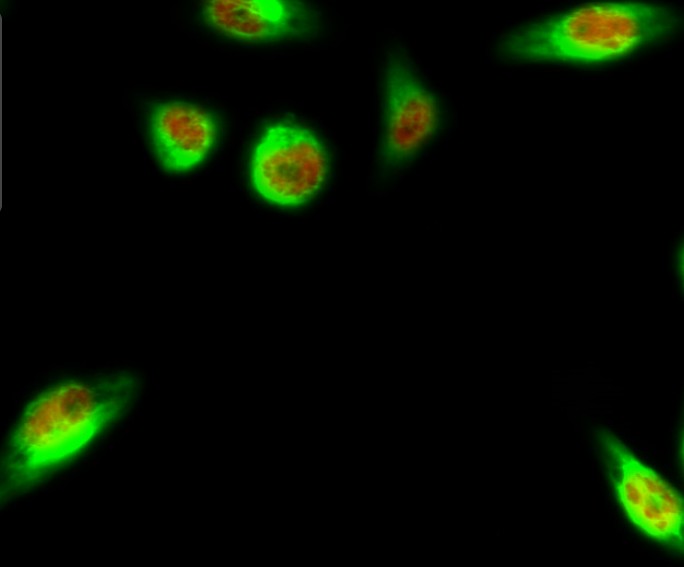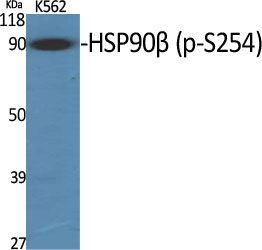Phospho HSP90B (S254) Cell-Based Colorimetric ELISA Kit
- Catalog No.:KA1169C
- Applications:ELISA
- Reactivity:Human;Mouse;Rat
- Gene Name:
- HSP90AB1
- Human Gene Id:
- 3326
- Human Swiss Prot No:
- P08238
- Mouse Swiss Prot No:
- P11499
- Rat Swiss Prot No:
- P34058
- Storage Stability:
- 2-8°C/6 months
- Other Name:
- Heat shock protein HSP 90-beta (HSP 90) (Heat shock 84 kDa) (HSP 84) (HSP84)
- Detection Method:
- Colorimetric
- Background:
- function:Molecular chaperone. Has ATPase activity.,PTM:Phosphorylated upon DNA damage, probably by ATM or ATR.,similarity:Belongs to the heat shock protein 90 family.,subcellular location:Identified by mass spectrometry in melanosome fractions from stage I to stage IV.,subunit:Homodimer. Interacts with TP53/p53 (By similarity). Interacts with UNC45A. Binding to UNC45A involves 2 UNC45A monomers per HSP90AB1 dimer.,
- Function:
- regulation of cytokine-mediated signaling pathway, protein folding, response to unfolded protein, positive regulation of biosynthetic process, regulation of catabolic process, negative regulation of catabolic process, response to organic substance, negative regulation of macromolecule metabolic process, regulation of proteolysis, positive regulation of cellular biosynthetic process, regulation of cellular catabolic process, negative regulation of cellular catabolic process,regulation of cellular protein metabolic process, negative regulation of cellular protein metabolic process, regulation of proteasomal ubiquitin-dependent protein catabolic process, negative regulation of proteasomal ubiquitin-dependent protein catabolic process, regulation of protein catabolic process, negative regulation of protein catabolic process,regulation of nitric oxide biosynthetic process, positive regulation
- Subcellular Location:
- Cytoplasm . Melanosome . Nucleus . Secreted . Cell membrane . Dynein axonemal particle . Cell surface . Identified by mass spectrometry in melanosome fractions from stage I to stage IV (PubMed:17081065). Translocates with BIRC2 from the nucleus to the cytoplasm during differentiation (PubMed:18239673). Secreted when associated with TGFB1 processed form (LAP) (PubMed:20599762). .
- June 19-2018
- WESTERN IMMUNOBLOTTING PROTOCOL
- June 19-2018
- IMMUNOHISTOCHEMISTRY-PARAFFIN PROTOCOL
- June 19-2018
- IMMUNOFLUORESCENCE PROTOCOL
- September 08-2020
- FLOW-CYTOMEYRT-PROTOCOL
- May 20-2022
- Cell-Based ELISA│解您多样本WB检测之困扰
- July 13-2018
- CELL-BASED-ELISA-PROTOCOL-FOR-ACETYL-PROTEIN
- July 13-2018
- CELL-BASED-ELISA-PROTOCOL-FOR-PHOSPHO-PROTEIN
- July 13-2018
- Antibody-FAQs



